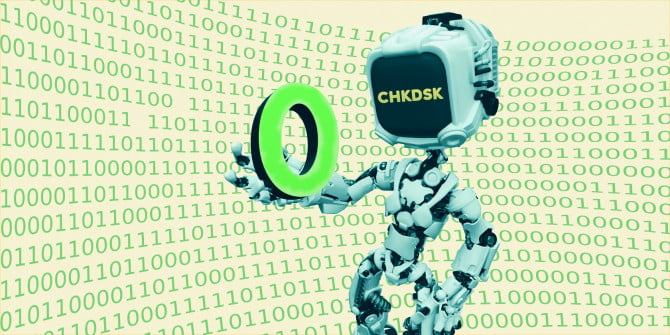As we all know. CHKDSK is able to check your drives for errors. Yet, if misused, it will cause unrecoverable damage to your drives. Now, in this article, we will expose its 4 most common risks.
Windows has a native disk repair tool – CHKDSK, which is really robust to detect bad sectors and fix disk errors. However, it may result in some troubles and risks when it is misused in some cases. Now, in the followings, we will unveil the 4 top risks of running CHKDSK on your drives.

1. Run CHKDSK after Data Loss
If you’re experiencing data loss, such as accidental file deletion or file corruption like damaged PST file, you should never run CHKDSK at this time. As we all know, CHKDSK can recognize bad sectors and mark them unworkable. Therefore, for instance, if you have mistakenly deleted a file, the sector of the file is marked as available and free. In this case, if you run CHKDSK, it will find out the bad sectors and remap the files on bad sectors to spare sectors, such as to the sector where the deleted file was located. Thereby, it erases the accidentally deleted file from the drive permanently, not to mention to recover it. In a nutshell, you can kiss the file goodbye forever.
2. Run CHKDSK after Physical Damage
In addition, it is known that, apart from logical issues, you can suffer data losses due to physical or mechanical damage on hard drive, such as crashed drive heads, scattered platters and compromised Printed Circuit Board, etc. Thus, if you can confirm that what you’re coming across are physical failures, you should stop any operations on your drive, of course including running CHKDSK. If you proceed to operate, the drive will be hard forced to run. Then, the drive components may be subject to further damage, such as thoroughly destroyed heads.
3. Run CHKDSK after Virus Attacks
Moreover, provided that you have discovered that your hard drive is attacked by viruses or malware, you are better off running antivirus software to remove them in the first place, instead of launching CHKDSK at once. It is because that running CHKDSK at this point may locate and delete the infected files straightforward. Yet, at times, the files are still useful and needful for you.
4. Run CHKDSK to Scan Large Drives
Last but not least, CHKDSK has a limit which will arise when scanning the drive in large storage capacity. It is an unquestioned fact that large hard drives take a pretty long time to check and repair, sometimes up to a few days. In this course, any unexpected errors can take place. Thus, when a large disk has malfunctioned, you ought to think carefully about whether to run CHKDSK or not. It indeed has some risks.
Author Introduction:
Shirley Zhang is a data recovery expert in DataNumen, Inc., which is the world leader in data recovery technologies, including SQL Server repair and outlook repair software products. For more information visit www.datanumen.com